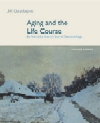1. What kinds of welfare programs are available to aging Americans?
There are three types of welfare programs. Social assistance is a minimal means-tested
benefit for the poor, paid for by income taxes. Social insurance provides benefits
as an automatic right to all who have contributed. Payment comes from payroll
taxes. Fiscal welfare operates through the tax system. It uses tax incentives
to encourage savings for retirement, expand health insurance access, and encourage
home ownership. 2. What are the government-sponsored sources of income support for
the aging?
Social Security provides more than 40 percent of the income of older people.
Individuals who contribute to the system by paying payroll taxes during their
working years automatically receive benefits when they reach the age of eligibility.
Supplemental Security Income is a joint federal-state program for the aged,
blind, and disabled poor. Benefits are quite low, below the poverty level in
most states, and many who are eligible fail to apply for such assistance because
of the social stigma attached to means-testing. 3. What government health care programs serve the elderly?
Medicare is a program of national health insurance for people over age 65 who
are eligible for Social Security. It covers many of the costs of a hospital
stay (Part A) and physician office visits (Part B). Although Medicare is an
important program for the aged, older people still pay a large and increasing
share of their income for health care. Medicaid is a program of health insurance
for the aged, blind, and disabled poor. It pays for a range of health care services
as well as a large share of the cost of nursing home care. 4. Which government programs protect the disabled?
There are two programs that provide income for disabled people, Disability Insurance,
which is one of the benefits of Social Security, and SSI, which provides a minimal
income for those who have not contributed to Social Security. Both programs
contain work disincentives, since beneficiaries stand to lose health insurance
coverage if they return to work. 5. How is long-term care of the elderly financed in the United States?
Long-term care refers to the range of supportive ser-vices and living environments
that help the elderly continue to live independent lives for as long as possible
and that provide institutional care when independent living is no longer feasible.
In the United States long-term care benefits are provided by a complex array
of programs including Medicare, Medicaid, and services under the auspices of
the Older Americans Act. Medicaid is the main source of public funding for long-term
care. To discourage institutional care, during the past decade states have been
allowed to use a portion of their Medicaid dollars for waiver programs to provide
services in the home. Among the services offered are homemaker services, adult
day care, meals-on-wheels, physical therapy, and help with chores. 6. What social services does the Older Americans Act provide?
The Older Americans Act also provides funds for a number of services including
congregate meals, day care, and meals-on-wheels. Many of these services overlap
with those provided by Medicaid waiver programs. Although services through the
OAA were originally supposed to be available to all elderly, regardless of income,
scarce resources have meant that these services increasingly have been targeted
to the elderly poor and to minorities. |



 2002 McGraw-Hill Higher Education
2002 McGraw-Hill Higher Education